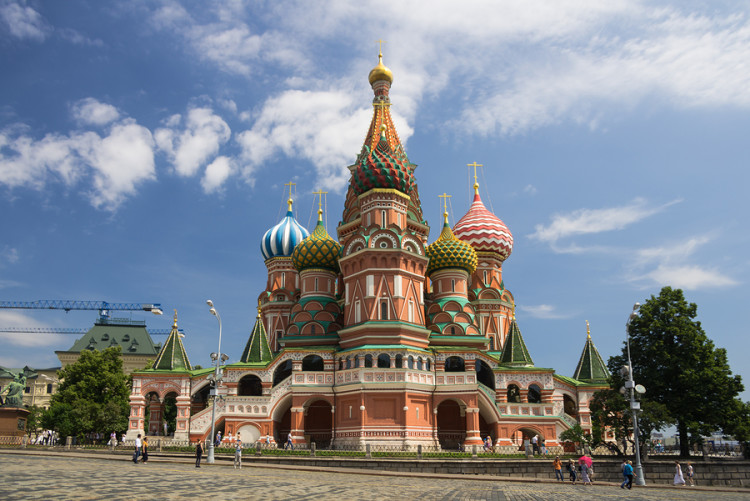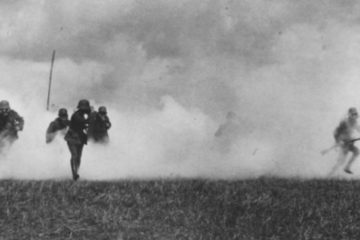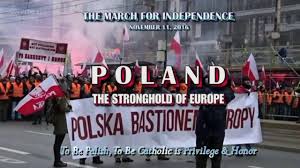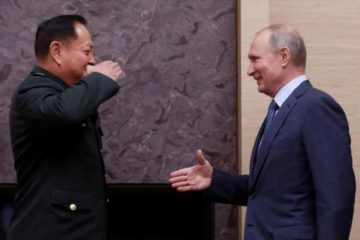West Berlin on the Baltic: Putin Buildup Fuels Invasion Fears

published Jul 6th 2016, 6:01 pm, by Henry Meyer
(Bloomberg) —
Vadim Kuznetsov says his excursion-boat business along Russia’s border with Poland has been torpedoed by a new Cold War.
“They’re scared,” Kuznetsov said of the Poles, once his main customers, who no longer venture across the border for fishing trips. “What have they got to be afraid of?” he asked, his idle boat moored at a jetty.
Some of the explanation is anchored just a few hundred meters away at the main base for Russia’s Baltic Fleet. A minesweeper and a guided-missile cruiser give a hint of the biggest Russian military build-up in the region since Communism collapsed.
For most of that period, Kaliningrad, an enclave wedged between Poland and Lithuania, tried to turn itself into a gateway for European investment. But amid Russia’s recent rearmament, the region has increasingly returned to its Soviet-era role as a garrison on the strategic Baltic Sea coast.
For more on rising tensions with Russia, click here.
This time, however, the countries just to Kaliningrad’s east — the Baltic states of Lithuania, Latvia and Estonia — are members of the North Atlantic Treaty Organization, not part of the Soviet Union. How to protect them, which was a largely hypothetical question for the alliance until Russia’s 2014 annexation of Crimea from Ukraine, has now become a central challenge for NATO.
Impossible to Defend
Their location, all but cut off from the rest of the alliance by Kaliningrad, has turned them into an oversized version of West Berlin, which had to rely on Western airlifts during a Soviet blockade during 1948-49. Largely surrounded by Russia, the Baltics are too exposed to defend effectively but too important for the alliance not to protect.
QuickTake Cool War
“NATO could not have militarily prevented a determined Soviet effort to overrun West Berlin, nor can it militarily prevent a determined Russian effort to overrun the Baltic states. But if the Soviets had overrun West Berlin, that would have meant war with NATO,” said Thomas Graham, a senior White House aide at the time the three countries joined the alliance more than a decade ago. “In theory, the same thing should hold true if the Russians made an effort to overrun any Baltic state.”
To help dispel doubts about its commitment, NATO this week will approve plans to deploy four battalions to rotate through the region. But though bigger than what the military bloc has ever placed there before, the units will still be dwarfed by Russia’s forces on the other side of the border.
The Kremlin, which is spending 20 trillion rubles (about $313 billion) on an ambitious defense upgrade through 2020, argues that it’s just responding to NATO’s encroachment toward Russian borders. In May, Russia announced plans to put two new divisions in the Western region and another in the south. That could be about 30,000 troops, compared to 4,000 in NATO’s plan.
Countries like Sweden and Finland that remained neutral through the Cold War are now considering joining NATO.
‘Russia Is Feared’
“In the Baltic States – and elsewhere – Russia is feared,” Finnish President Sauli Niinistoe said last week after a meeting with Vladimir Putin. The Russian leader responded that NATO’s buildup was a risk to his country’s security. “All this creates an obvious threat for us that no one wants to notice,” he said, suggesting that if Finland joined the alliance, Russia could respond by moving troops closer to its border.
Russia already has contingency plans for an attack on the Baltic states, as they belong to a hostile military alliance, according to a person close to the Russian Defense Ministry. The Kremlin could intervene militarily to defend ethnic Russia minorities there, for example, though this scenario is highly unlikely, the person said.
Even short of a full-scale attack, uncertainties about NATO’s ability to defend its members cast a shadow across the entire region. In 2007, for example, Estonia suffered a cyber-attack that crippled its highly computerized government and economy over a period of several weeks. Western officials blamed Russia, though the Kremlin denied any role.
“What the Russians would like to do politically is to undermine the confidence the Baltic states have in NATO’s Article Five guarantee,” said Steven Pifer, who served as U.S. deputy assistant of state from 2001-2004, referring to the treaty provision on mutual defense.
Sowing Insecurity
Some say the Kremlin has succeeded in creating a climate of insecurity without actually needing to fight.
Putin “wants to divide Europe, divide NATO, and he’s got a multitude of policies that he keeps pursuing to achieve those ends,” said Michael McFaul, who was U.S. ambassador to Russia from 2011-2014. “Raising the specter of conflict in the Baltic states increases the debate in other capitals in Europe, is this such a good idea for us?”
At the same time, major additional NATO deployments in the region could provoke a further Russian buildup as the Kremlin seeks to protect St. Petersburg, the country’s second-largest city. “It’s a vicious circle,” Finnish President Niinistoe warned in his appearance with Putin last week.
Kaliningrad’s isolation from the rest of Russia also creates risks, as the Kremlin might try to seize the 100-kilometer wide strip on the Polish-Lithuanian border known as the Suwalki gap that separates the enclave from Belarus, a Russian ally. In the Cold War, NATO defense efforts focused on the Fulda gap, a strip of the border with East Germany through which invading Soviet tanks were expected to move.
Growing Fears
Risks to the Baltic countries’ security seemed remote when they were brought into NATO in 2004.
“Russia was seen as a potential, even if problematic, partner and no one was thinking about it as a military threat,” said Pifer.
Fears in the region grew after the 2008 war in Georgia, on Russia’s southern border, the Kremlin’s first major use of forces outside the country since the collapse of the Soviet Union. But by the next year, the U.S. was in the midst of its “reset” policy aimed at improving relations with Russia and had little appetite for confrontation.
The conflict in Ukraine changed everything, as leaders in the U.S. and Europe warned that Russia’s annexation of Crimea was a threat to security across the whole region.
NATO began discussions that led to the deployment to be announced at the Warsaw summit. Still, NATO officials admit those forces would hardly be enough to stop a Russian assault.
‘Not Enough’
“Current NATO plans aren’t enough,” said retired general Ants Laaneots, who commanded Estonia’s forces from 2006-2011. Together, the three Baltic countries, whose combined size and population equals the U.S. state of Missouri, have about 28,000 troops, mostly lightly armed and with very little air or sea fighting capability.
A Russian lightning strike would be able to reach the capitals of Estonia and Latvia in 36 to 60 hours, said a report by the RAND Corporation think tank, which was based on a series of war games staged between summer 2014 and spring 2015.
“The balance of forces in the region is such that Russia has the potential to present NATO with something of a fait accompli in the Baltics,” said RAND’s David Shlapak.
Forces stationed in the region, including more than 50 ships and two submarines and advanced S-400 air-defense systems, together with other land, naval and air assets on Russia’s western flank, would allow it to effectively close off the Baltic Sea and skies to NATO reinforcements, defense experts say.
“Air space is going to be contested in a way the U.S. and its allies haven’t had to deal with for over two decades,” said Douglas Barrie, senior fellow for military aerospace at the London-based International Institute for Strategic Studies.
Seized from Germany at the end of World War II, when it was known as Koenigsberg, Kaliningrad would be a key base in any Russian operation in the region.
“Before the U.S. takes any aggressive actions against Russia, they should think very carefully what they’ll get in response,” said Boris Kosenkov, head of the Kaliningrad veterans’ association and a former general who served in East Germany in the 1980s.
–With assistance from Ott Ummelas and Aaron Eglitis.
To contact the author of this story: Henry Meyer in Moscow at hmeyer4@bloomberg.net To contact the editor responsible for this story: John Fraher at jfraher@bloomberg.net Gregory White
COPYRIGHT
© 2016 Bloomberg L.P







No Comment